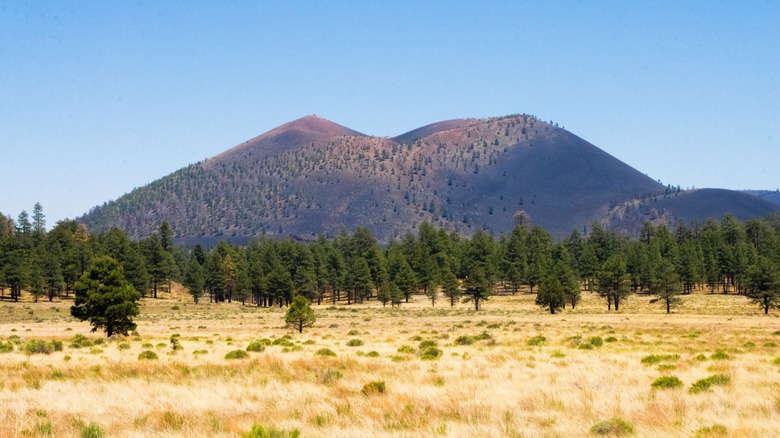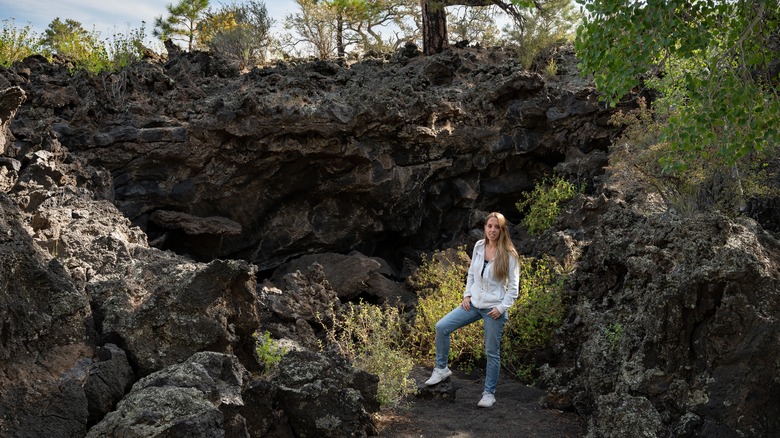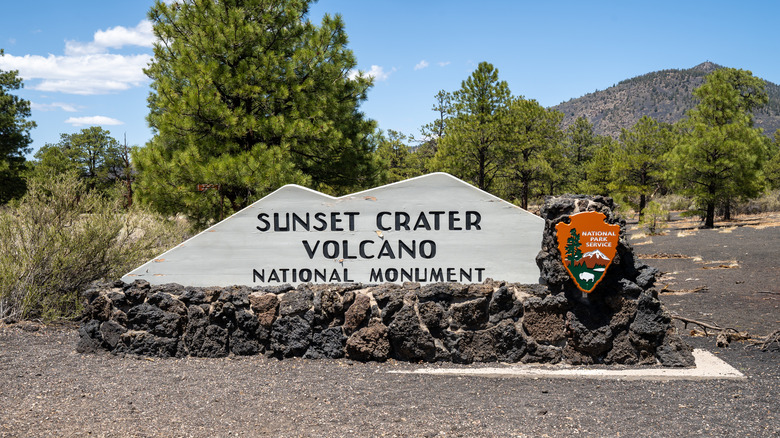Discover The Site Of Arizona's Most Recent Volcanic Eruption At This Unique Hiking Paradise
Did you know that around 1,000 years ago, there was a one-year-long volcanic eruption in Arizona? Well, now you do. The remains of it are still around, and you can discover them for yourself: Sunset Crater Volcano, located in the Coconino National Forest, just a short drive from Sedona, Arizona. This dormant volcanic cone is an awe-inspiring destination for hikers, nature enthusiasts, and history buffs. A visit here offers a chance to explore the remnants of Arizona's most recent volcanic eruption, with landscapes that are visually striking and geologically significant.
The eruption that created Sunset Crater Volcano occurred around 1085 A.D., a relatively recent event in geological terms. A violent explosion radically altered the landscape, sending ash and lava across the surrounding area and covering about 800 square miles with volcanic debris. The resulting cinder cone stands 1,000 feet tall. The Sinagua (Ancestral Puebloan) people, who inhabited the area, were forced to relocate as the eruption completely destroyed their farmlands and communities. Since 1930, the area has been considered a National Monument and is managed by the National Park Service.
Sunset Crater is a surreal sight. However, hiking directly on it is not permitted to protect its fragile environment and ancient volcanic ruins — plus, all that lava is brittle, sharp, and unstable. Instead, visitors can enjoy five designated trails that will take them on a winding journey around this otherworldly volcanic landscape. You'll get incredible views of the crater from afar and all the preserved blackened lava fields, jagged rock formations, and surprisingly vibrant desert flora.
Hiking in the volcanic wonderland of Sunset Crater
To get as close as possible to Sunset Crater, you'll want to hike the Lava Flow Trail, a 1-mile loop that takes an hour to complete. It's one of the most popular trails in the entire National Monument area. As you walk along this family-friendly trail that is also wheelchair and stroller accessible, you'll get to examine the lava rocks and cinder deposits up close. Interpretive signs along the way provide insight into the eruption's impact on the landscape. Keep an eye out for unique plants like the rare and endemic Sunset Crater penstemon and Cinders phacelia, only found on young volcanic cinder deposits.
For hikers looking for more of a challenge, the Lenox Crater Trail provides a steeper ascent (280 feet of elevation gain) with an American view that belongs on your bucket list. This 1.6-mile round-trip trail takes visitors through a ponderosa pine forest to the top of an older nearby cinder cone that offers panoramic views of Sunset Crater and the surrounding San Francisco Peaks. The hike is around 1.5 hours and is considered moderately strenuous. The summit will reward you with an unbeatable vantage point to appreciate the full scale of the eruption that transformed this region 1,000 years ago.
A highlight of the Sunset Crater Volcano National Monument is the Bonito Lava Flow, one of the most well-preserved lava flows in the area (the other one being Kana'a Flow). You can observe it along the Bonito Vista Trail (0.3 miles, easy and accessible), A'a Trail (0.25 miles, easy), and the Lava's Edge Trail (3.4 miles, moderate difficulty). This solidified river of lava winds and twists its way through the desert, appearing as twisted blocks, deep crevices, and all types of bizarre formations.
Tips for your visit to Sunset Crater
Sunset Crater isn't an isolated "attraction" — it's part of the much larger San Francisco Volcanic Field, which contains 600 volcanoes spread across 1,800 square miles. It became active 6 million years ago, and Sunset Crater is the youngest one of the bunch. Luckily, it's classified as a monogenetic volcanic field, which means that each one of those 600 volcanoes only erupts once and never again. The volcanic activity in this region has shaped much of the landscape. Visitors to Sunset Crater are conveniently close to other related geological marvels, like the Wupatki National Monument and the famous San Francisco Peaks, Arizona's highest mountain range. You can learn more about history and geology at the Sunset Crater Volcano Visitor Center, which features a museum.
Sunset Crater is open year-round, but it does get cold and even snowy sometimes in the winter, while the summer is very hot and only early morning hikes are really possible. Spring and fall would be ideal for your visit; temperatures are mild, and the desert comes to life. An entrance fee is required to visit the monument, but the pass is valid for both Sunset Crater Volcano and the nearby Wupatki National Monument, making it easy to explore both in one trip. If you have the amazingly affordable America the Beautiful Pass, visiting is even easier. To spend the night in the area, you can camp at the Bonito Campground or the O'Leary Group Site. Plus, Sunset Crater is an IDA-certified Dark Sky Park, so you'll get some spectacular celestial viewing once the sun sets.


